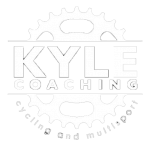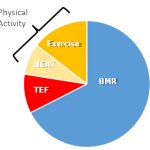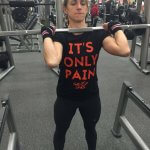Utilizing Power with your Cyclocross Training
Another cyclocross season is here and it’s time to step-up the training. Over the past three years, the science of cycling analytics has continued to expand. A spectrum of software and internet sites provide the means to analyze daily rides, identify strengths and weaknesses, track adherence to a training plan and a whole lot more. In late 2015, TrainingPeaks released the long-awaited WKO4. One item heavily discussed was an update to Dr. Andy Coggan’s Power Training Levels. The update was termed, Coggan’s Individualized Training Levels, iLevels for short. In a nutshell, it blends Coggan’s original training levels tied to a threshold and critical power model based on performance.
We, KyleCoaching, transitioned to iLevels at the beginning of the 2016 season, and it fundamentally changed our training philosophy. For those of you who race cross and have a power meter on your CX bike, we can use these Coggan precepts to refine your training plan.
To understand how KyleCoaching uses these iLevels along with your power data for cyclocross, we start with a discussion of periodization, how each phase is constructed, the requirements of a cross race, and finally, what your workouts will look like and how we will measure them.
For this discussion, I assume your cross season runs from September to early December. If you are racing US Nationals, then we can expand the plan out to that date, but for discussion, let’s assume the season will end around the first week of December.
The first thing to do is set the stage using periodization. Since cross season only lasts about five months, the traditional Annual Training Plan (ATP) does not fit. I will set it up using Base, Build, and Perform. We define Base as June to August; Build August and September, and Perform as September and November.
During Base, we focus on high volume, steady state intervals, and other workouts that build muscular strength. Cyclocross plans usually do not incorporate a Base period because most athletes are gaining a solid aerobic base during their road season. The high volume gives the athlete the aerobic base necessary to do more high-intensity interval work. I like to see most of my athletes coming off of a road season with a Chronic Training Load (CTL) of greater than 80 TSS/day.
The Build phase of a cross training plan consists of High-Intensity Interval Training (HIIT), repeats, running (especially sprints) all done on a cross-like course, on a cross bike. During the Build phase, we focus on Functional Reserve Capacity (FRC) and Functional Threshold Power (FTP).
During Perform phase, we assume the athlete is racing almost every weekend. With that said, the Build and Perform phases may look similar. However, the target of each phase differs, as we shift from focusing in on the athlete’s FTP to the maximum power they can produce.
Why does this sound so different from your standard road training plans? Cyclocross places different demands on the rider compared to road racing. Your typical cyclocross race is between 30 and 60 minutes. Before you think, “Sounds like a grass crit!”, remember that one can sit in the group and recover in a road crit. In a CX race, there is nowhere to hide, which requires very specific energy systems.
The primary systems used during a CX Race are the ones that produce FRC/FTP and muscular endurance. These systems are supported by the athlete’s muscular strength and the force (torque x RPM) that they can supply to the pedals. As I mentioned earlier, a good aerobic base will help support high-intensity training but having significant stamina, being able to do long tempo rides, and active recovery rides just are not necessary.
How do we develop plans to support these systems? During the fall months, everyone becomes a Time Crunched Cyclist. The days get shorter; weather begins to change, and family obligations from Soccer practices start to interfere with nightly rides. The first thing we do is rank in importance the systems that need to be developed for cross.
The most important system is the FRC/FTP system. If you are used to the old Coggan training zones, this is VO2Max workouts. These are intervals that last between 2-5 minutes and are in the athletes FRC/FTP training zone. We start with three intervals and work up to about 8. These intervals mimic the stresses of VO2 efforts in a typical cross race.
The next system to work on is the athlete’s Threshold. Threshold training is fundamental in the KyleCoaching philosophy across all disciplines. Once again workouts consist of intervals of 10-20 minutes at one’s lactate threshold.
Equally as important is the athlete’s Fatigue Resistance. In short, how hard can the athlete go and how repeatable is this effort. In cyclocross, the rider is going full bore then rest, repeat, repeat, repeat. It is paramount in cyclocross to be able to repeat this action over and over.
Once of the factors of repeatability is muscular endurance, the ability of a muscle or group of muscles to sustain repeated contractions against a resistance for an extended period of time. This is not tempo event; it is on and off as mentioned above.
On what do you need to focus to succeed in CX? As you would expect, the answer depends on your strengths and weaknesses as well as your time constraints. On some days, your training session may look like something you did for the road season. Other times, very different. Your workouts will target these two systems, as well as muscular strength. If needed, we can also add some beer hand-up practice.
References:
Critical Power Model
The Power Behind Cyclocross – 5 Key Analytics
What is the Performance Management Chart?
WKO4



 g, and becoming fit.
g, and becoming fit.





